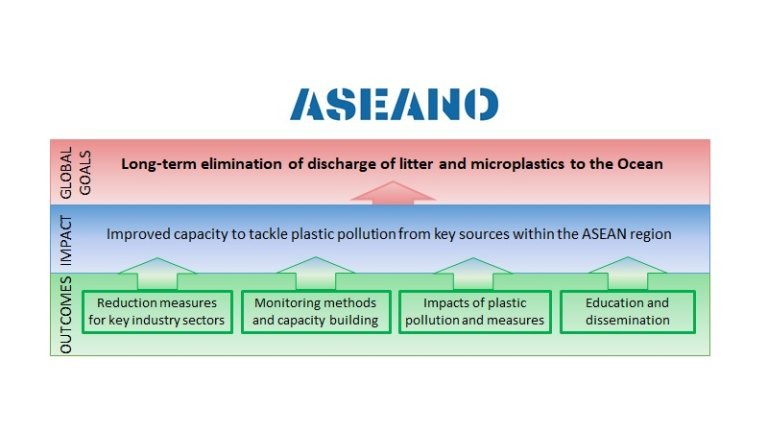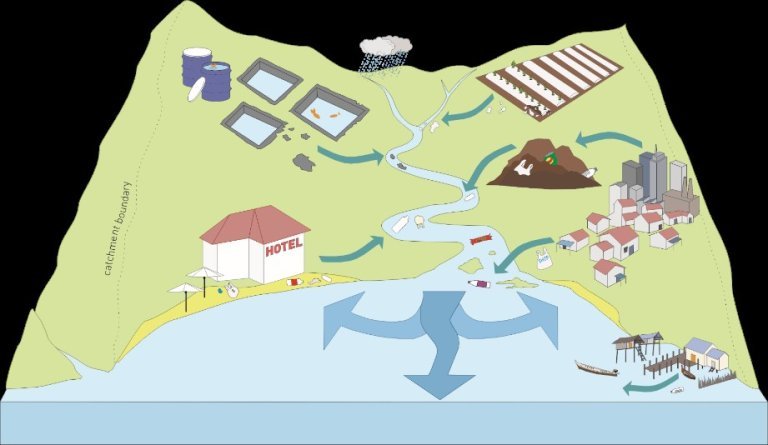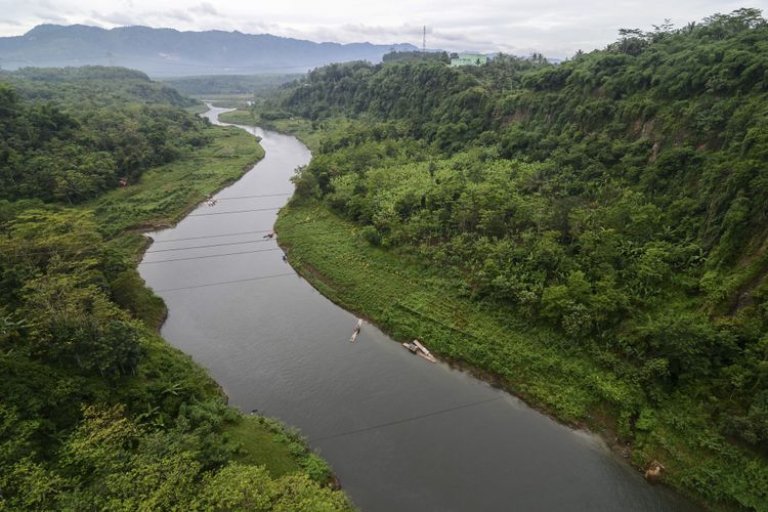Phase 1 (2019–2022)
Phase 1 of ASEANO (2019–2022) was a regional capacity building project led by NIVA and the Center for Southeast Asian Studies Indonesia (CSEAS), in collaboration with Partnerships in Environmental Management for the Seas of East Asia (PEMSEA) and the ASEAN secretariat, under the purview of the endorsing ASEAN sectoral body ASEAN Working Group on Coastal and Marine Environment (AWGCME).
The project was funded by the Norwegian Development Program to Combat Marine Litter and Microplastics for the period 2019-2022.
Background
Southeast Asia has experienced rapid industrialisation over the past decades, followed by economic growth and improved quality of life. Concurrently, material consumption has increased drastically, while the development of waste management infrastructure has been trailing behind. Much of the world’s plastic waste is shipped to Asia and the ASEAN region is both a major importer of plastic for processing, and a significant source of plastic pollution due to poor waste management. In fact, recent reports suggest that half of land-based plastic waste leakage originates from four countries alone: China, Indonesia, Philippines, and Vietnam, of which the last three are members of ASEAN. As pollution issues receive increased attention, focus is set on several environmental issues, including land use deprivation, water pollution and loss of biodiversity. However, little information and concrete data is available, and targeted science-based knowledge is warranted for sound decision making to solve the problem.
Goals
The main goal of the ASEANO project is to build capacity to tackle plastic pollution from key sources in the ASEAN region through improved knowledge on sources, releases, transport, and fate of plastic pollution. The core objectives include illuminating driving forces and its implications for economy, development, environment, and human well-being, through the four inter-linked project pillars:
- Reduction measures for key industry sectors;
- Environmental monitoring methods and capacity building;
- Socio-economic impacts and reduction measures; and
- Education and dissemination.
Through a multidisciplinary, cross-sectoral, and integrated approach the ASEANO project will focus on local municipality/city level sustainability and a set of sound and feasible measures to reduce plastic pollution from key sectors.

A common problem in the ASEAN region is the large number of small and medium-sized companies which generate enormous amounts of mismanaged waste. This adds to the waste generated by households and larger companies. The ASEANO project will work with key sources for plastic releases in collaboration with selected companies and governments in designated sub-catchments. A novel catchment-based model for prioritizing measures will be developed. With the model, the release, transport, and fate of plastic pollution will be quantified and scenarios for future plastic pollution trends under different management and pollution control options will be evaluated. Through strengthening the knowledge base and sharing experiences and best practices on technology, regulation, and management, the project will point to targeted and cost-efficient preventive and mitigative measures.

A catchment-based model will be developed, where release, transport and fate of plastic pollution will be quantified.
The project will also develop a catalogue of monitoring methods, adapted to fit local and regional needs. Local monitoring capacity will be built through methodological training. Socio-economic implications for plastic pollution will be assessed and analysed for potential secondary impacts of proposed reduction measures. Finally, the project results will be synthesised for development of sector-specific roadmaps on prevention and release reduction. The roadmaps will be disseminated widely to potentially extrapolate reduction measures within ASEAN.

The launch of ASEANO December 9th marks the kick-off of a week-long workshop in Indonesia where researchers from the Norwegian Institute for Water Research (NIVA) and ASEAN-partners Center for Southeast Asian Studies Indonesia (CSEAS) and Partnerships in Environmental Management for the Seas of East Asia (PEMSEA) will visit Citarum River on Java, known as one of the world’s dirtiest rivers.
The Norwegian Development Program to Combat Marine Litter and Microplastics was launched in 2018 and intends to contribute towards the prevention and reduction of marine pollution. The program focuses on large pollution sources in developing countries, and the main goal is to support the UN Environmental Assembly in their aim to eliminate the discharge of litter and microplastics into the oceans.
The Association of Southeast Asian Nations (ASEAN) includes the member states Brunei, Cambodia, Indonesia, Laos, Malaysia, Myanmar, Philippines, Singapore, Thailand and Vietnam. The association was established in 1967 as a foundation for regional cooperation in the fields of economy, culture, education and technology, in addition to promote peace and stability. (Source: asean.org)